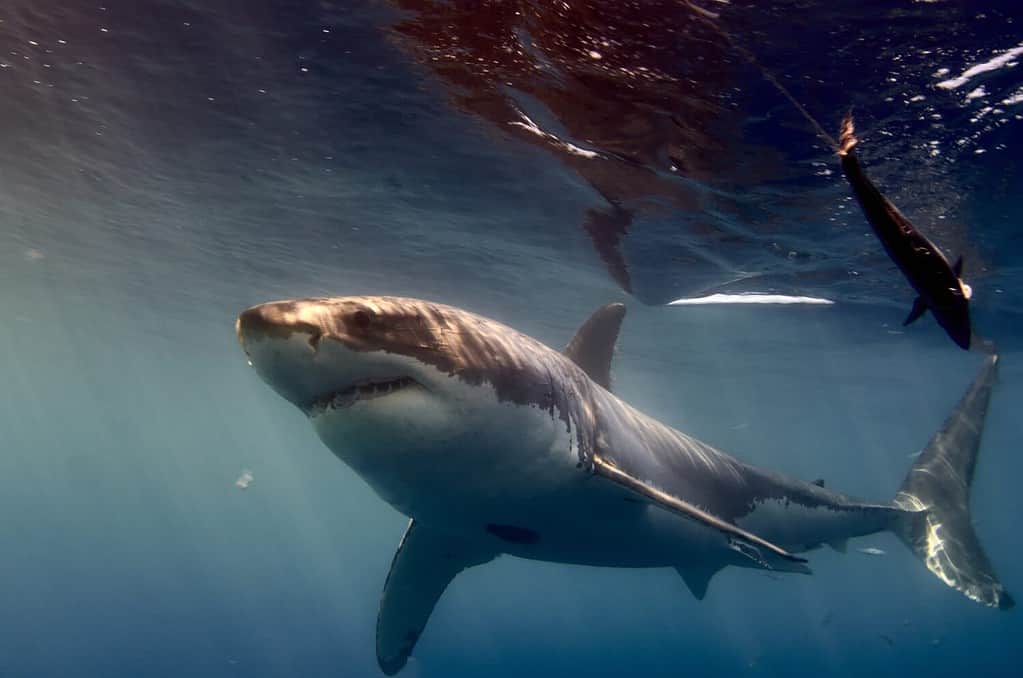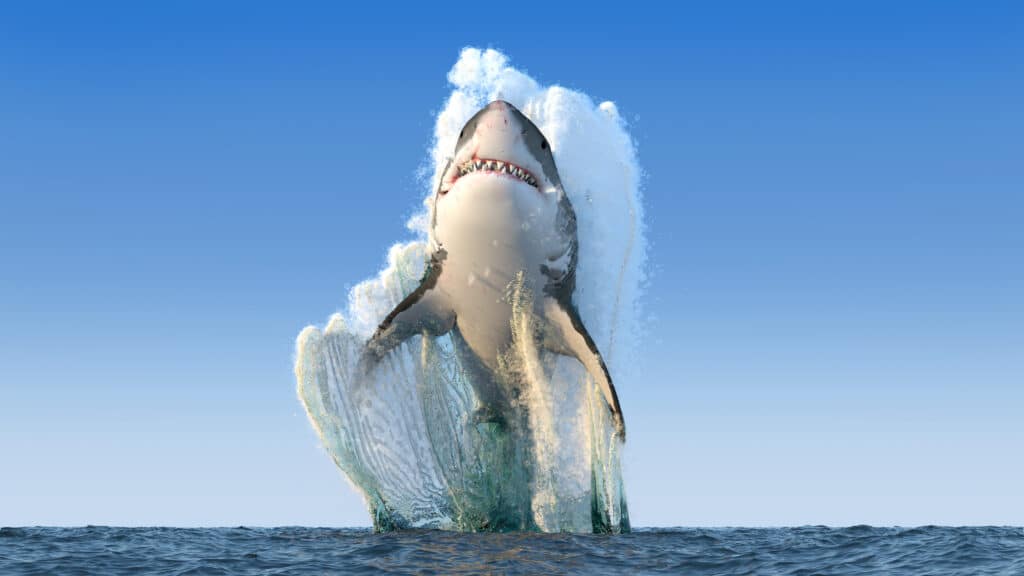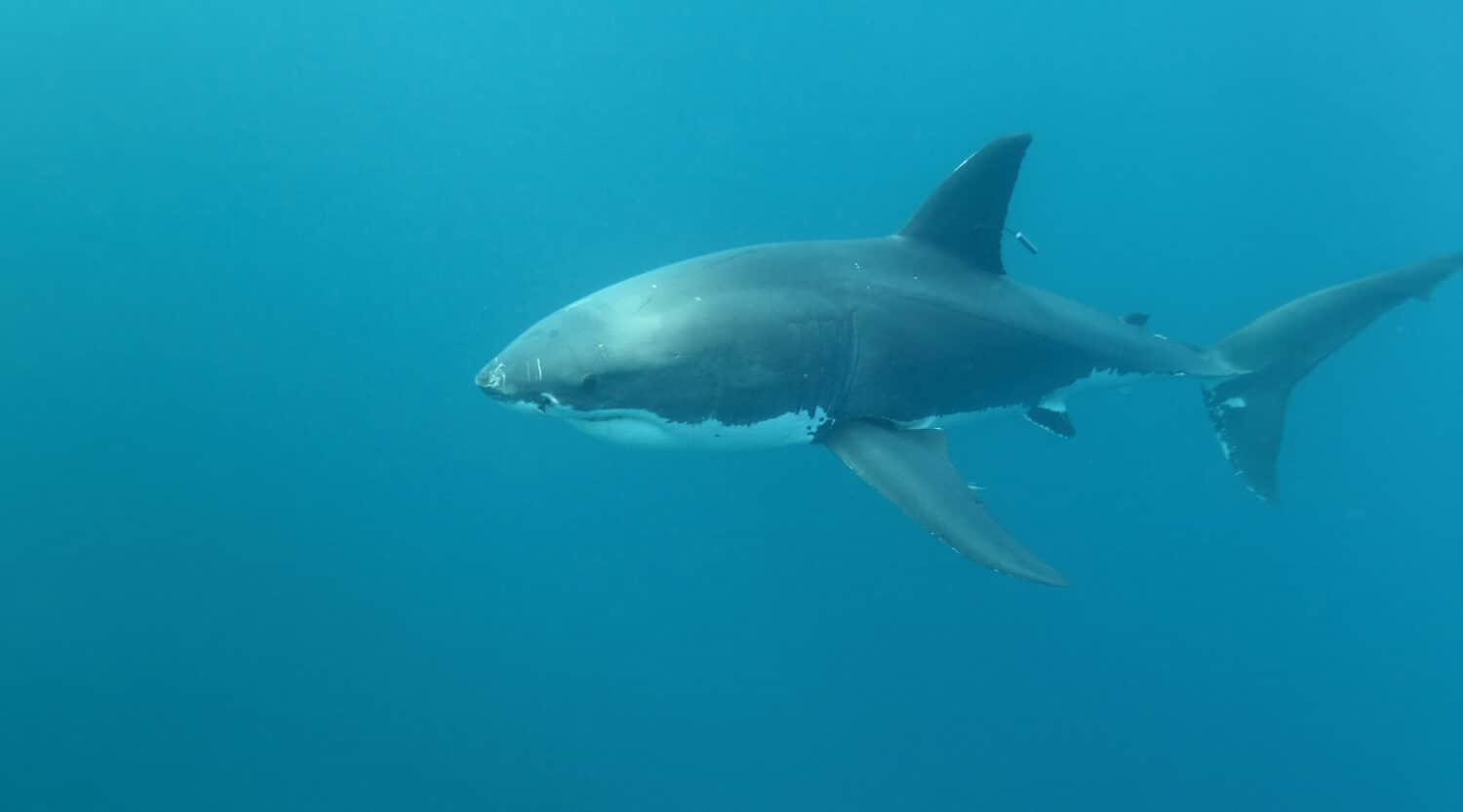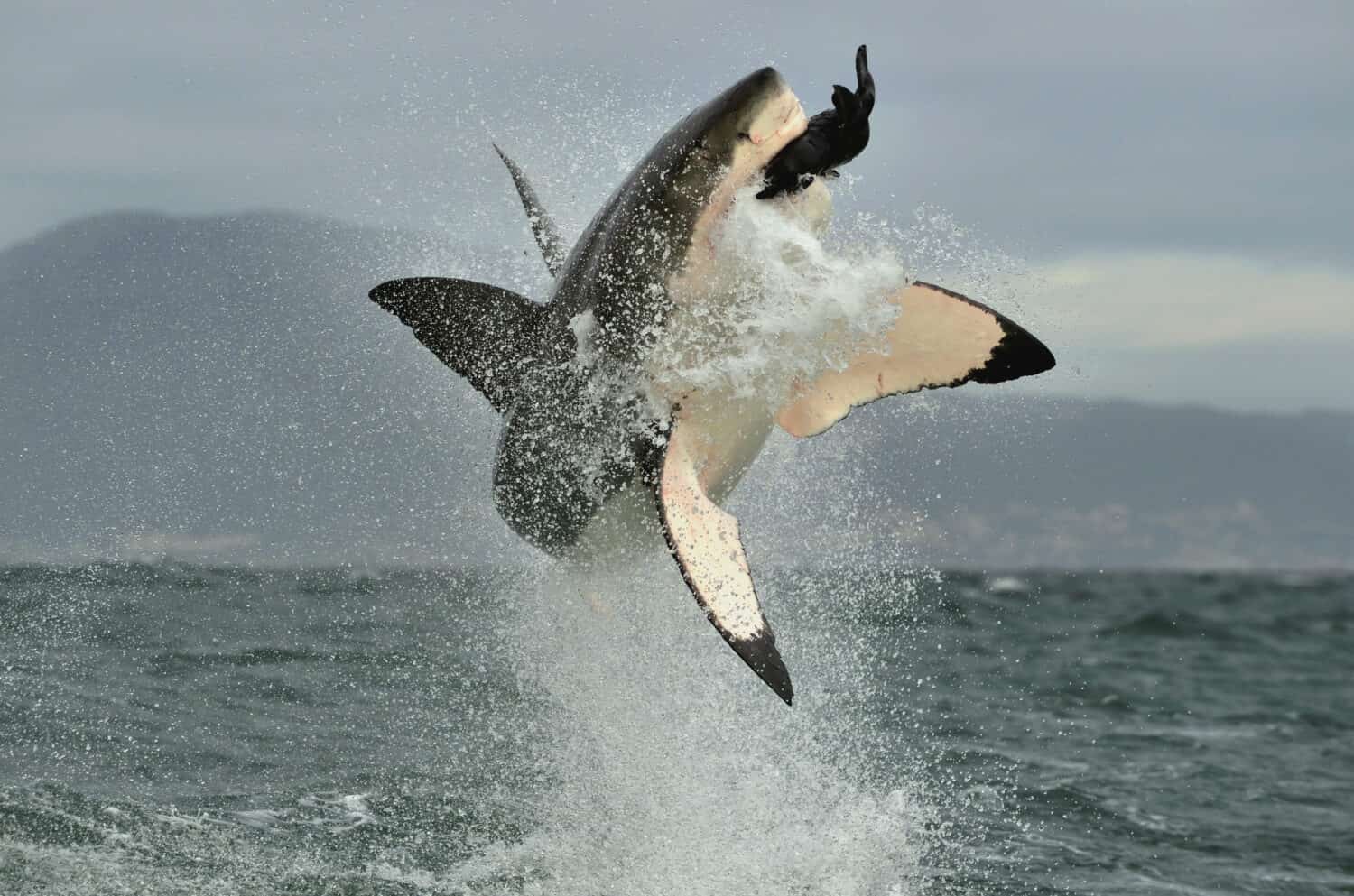Great white sharks are some of the ocean’s most incredible and often unfairly characterized megafauna. These stunning and ecologically vital animals have a global distribution. Individuals can cover thousands of miles across the oceans throughout their lives. If you live on the coast of Maryland, you may be wondering if great white sharks travel through the state’s coastal waters and how big these beautiful creatures passing through are.
In this guide, we’ll dive into the work being done by oceanic and marine biology researchers tracking the travel of great white sharks. Read on to learn about some of the largest great white sharks found in Maryland waters.
Why Do White Sharks Migrate?
Great white sharks (Carcharodon carcharias) are highly migratory animals. They are known to travel tens of thousands of miles in their lifetime. The adults migrate long distances seasonally, often over 2,500 miles annually. The reasons for migration include the following:
- Seasonal migration to remain waters of about 50-80 degrees Fahrenheit.
- Reproduction.
- Birthing.
- Predation.
Juveniles tend to travel shorter distances and stay closer to shore, where they likely travel between nursery habitats that are safer and conducive to their growth.

The great white shark migrates seasonally to stay in their ideal water temperature range, and for mating, birthing, and predation.
©Wirestock Creators/Shutterstock.com
Largest Great White Sharks Found in Maryland Waters: When Do They Migrate Near the Maryland Coast?
This migratory behavior means that the great white sharks scientists are tracking off the coast of Maryland don’t live permanently in those waters. Instead, they pass through these waters seasonally. Many of these individuals spend their lives traveling up and down the coastal and open ocean waters of the western side of the Atlantic Ocean and Caribbean. Their range extends from the southern waters of Canada to the Caribbean Sea.
Some great whites do make transoceanic journeys as well. Lydia is the first tagged and tracked great white shark to journey across the Atlantic Ocean. Researchers had long suspected that great whites indeed make this transoceanic trek. Lydia’s travel was the first confirmation of this theory.
To follow the temperate range they thrive in, great whites spend their winters and early spring in the Caribbean, the Gulf of Mexico, and off the coast of the Southeast US. From there, they meander north along the East Coast to reach the waters of the Northeast US and Southeast Canadian Coast by summer. In early to mid-fall, these sharks tend to start heading back down the coast.
So, great whites are typically near the coastal waters of Maryland around mid to late spring and mid-fall.
How Big Do White Sharks Grow?
When white sharks are born, they’re typically about 4 feet long. These stunning animals can live 70 years or more, reach up to about 20 feet long, and weigh over 4,000 pounds. For this species, the females typically reach the largest sizes.

Great whites can grow up to about 20 feet long and weigh over 4,000 pounds!
©Alexyz3d/Shutterstock.com
Three of the Largest Great White Sharks Found in Maryland Waters
We’ll dive into three of the largest great white sharks tracked near the Maryland coast by OCEARCH. This nonprofit research organization gathers tracking and biological information on several crucial marine species, including great whites. Below, we’ll cover these three beautiful behemoths tracked passing through Maryland waters in ascending order of size.
Largest Great White Sharks Found in Maryland Waters: Bob
On October 23rd, 2022, OCEARCH researchers announced that they tracked Bob, a gorgeous and enormous 13-foot-long, 1,308-pound male great white shark, traveling through the Chesapeake Bay off the coasts of Maryland and Virginia. OCEARCH researchers first tagged Bob, named after their chief scientist, Robert Hueter, on September 20th, 2021, when they found him in the coastal waters of Nova Scotia.

The tag on this white shark’s dorsal fin enables researchers to track the animal’s migratory patterns.
©Alessandro De Maddalena/Shutterstock.com
Largest Great White Sharks Found in Maryland Waters: Mary Lee
On June 7th, 2017, Mary Lee, an enormous 16-foot-long, 2,639-pound female great white shark, was meandering about 20 miles off the coast of Maryland headed North. Mary Lee was first tagged in 2012 off the waters of Cape Cod, MA. Between then and the last tracker ping on June 17th, 2017, researchers tracked her journey of 33,258 miles. She journeyed up and down the East Coast and out into the open ocean of the Western Atlantic.
Largest Great White Sharks Found in Maryland Waters: Nukumi
Scientists with OCEARCH first tagged Nukumi (pronounced noo-goo-mee), a 17ft female white shark weighing over 3,500 pounds, on October 2nd, 2020, off the coast of Nova Scotia. From there, they tracked her journey as this beautiful, 50-year-old grandmother shark headed down the eastern US. She neared the coastal waters of Maryland around November 10th. From the Carolinas, Nukumi headed across the Atlantic Ocean. She joins Lydia as the only white shark documented in their journey across the Atlantic.

Predation is one reason that great white sharks, like 17-foot-long Nukumi, migrate.
©Sergey Uryadnikov/Shutterstock.com
Summary of The Largest Great White Sharks Ever Found Off Maryland Waters
| Rank | Shark | Size | Location |
|---|---|---|---|
| 1 | Nukumi | 17 ft, over 3,500 pounds | Ocean City |
| 2 | Mary Lee | 6 ft, 2,639 pounds | Chincoteague Bay |
| 3 | Bob | 3 ft, 1,308 pounds | Chesapeake Bay |
The photo featured at the top of this post is © iStock.com/Whitepointer
Thank you for reading! Have some feedback for us? Contact the AZ Animals editorial team.






